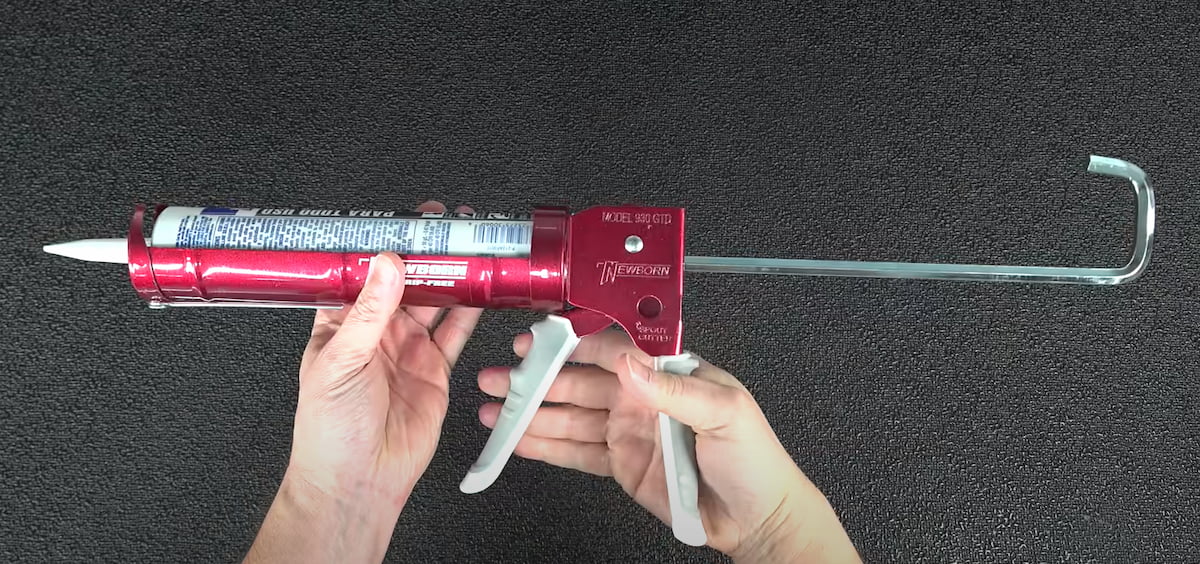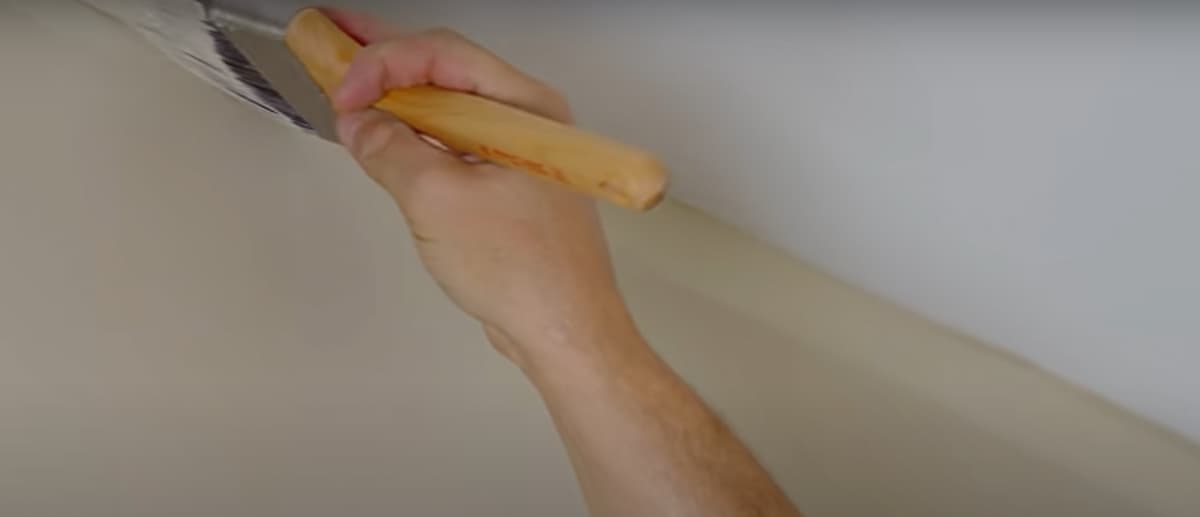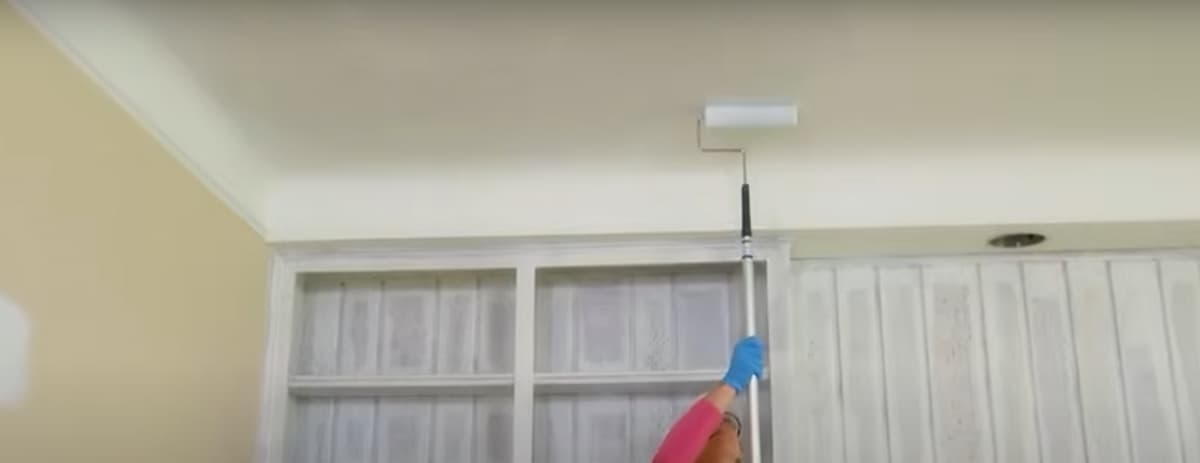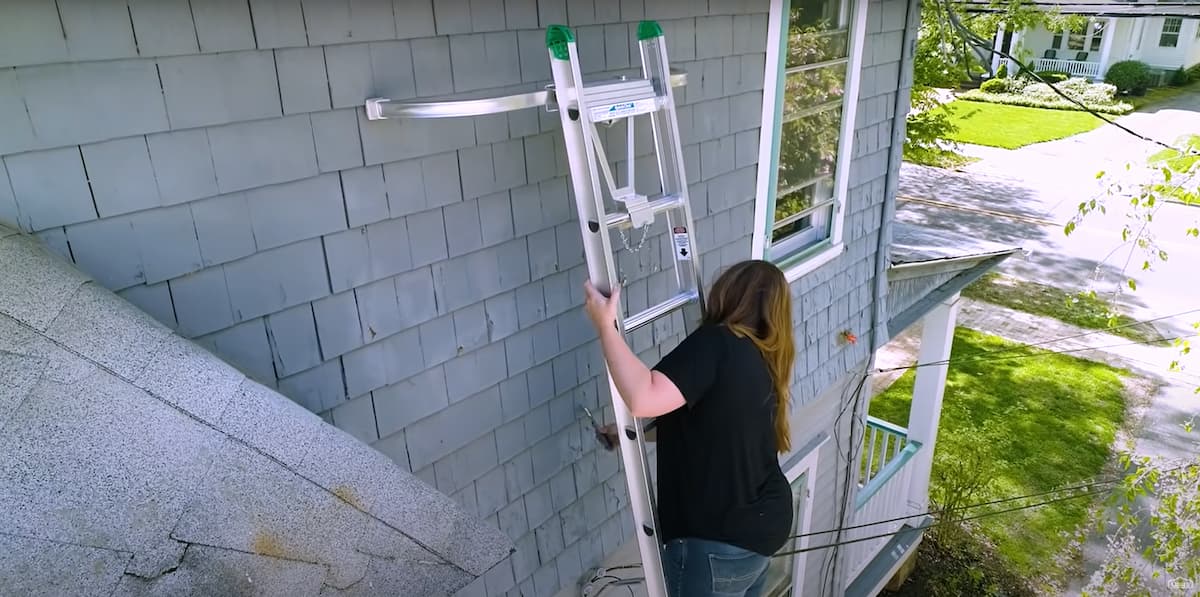
Caulking is a sealing process to fill the gap between two surfaces (e.g., wood and metal, tile and marble, etc.) using an elastic sealant like caulk. Caulk can be used in bathrooms or kitchens for countertops, floors, showers or other areas where grout might otherwise be used, outside for decks, on roofs, around windows and doors, inside walls, ceilings, fireplaces or any place where two edges meet each other. When you seal gaps or seal joints with a caulk gun, the conjoining surfaces keep out water vapour while still allowing necessary moisture to pass through.
Caulk shouldn’t ever be applied before staining furniture or other items because it’s difficult if not impossible to remove once dry. If you’re unsure, test a small area before using caulk on the entire surface.
What is Caulking in Painting?
When painting surfaces, it is very important to caulk around the windows, baseboards, seams, and outlets before you paint. This is called caulking or “sealing” and makes your job easier as a painter by helping ensure that the edges of the area you just painted remain clean and free from any splatters or drips until they’ve dried.
If you’re painting new drywall, it’s fairly easy to seal up all the joints so that later when you paint over them there won’t be any problems with seepage. However, on older walls where there may be cracks between different wallboard panels and even some loose wallpaper, this becomes part of your painting preparation process. If unsealed, the paint may eventually adhere to the loose stuff and you’ll have a lumpy mess that’s much more difficult to fix.
There are different ways to caulk around doors and windows depending upon whether they’re metal or wood frames. For metal ones you just need a tube of good metal-type latex caulk. For wooden ones, make sure you use 100% silicone caulk window and the door which is available at any hardware store. The only other type is called oil-based caulk which is used generally on an outdoor wood or masonry surfaces. It’s not recommended for inside use. Acrylic latex caulk which is another type of gooey sealant is good for sealing door and window gaps to prevent water damage in case there’s a leak in your roof.
Why Caulking is Important in Painting?
Caulk prevents the paint from seeping into unwanted areas and causing discolouration, excessive blistering, cracking or peeling. Caulking also makes it far easier to remove all traces of paint when you are finished with your project because there won’t be any annoying build-up that may take forever to scrape away before the area can be repainted
Another benefit of using latex caulk instead of regular yellow carpenter’s glue is that most people have an easier time removing the dried caulk than dried glue so if you need to touch up a paint job, it may be easier.
How to Apply Caulk Properly?
When applying caulk is very important that you make sure the gap or seam you’re working on is clean and dry. This makes for a stronger seal and better looking final application. For larger areas use the smooth plastic edge of your taping knife as a guide and work carefully around all edges of doors and windows., paying extra attention to the corners.
Make sure that there’s excess caulk beyond what’s needed (at least 10 cm) so that when you stretch out the material with your tool, it may easily cover most surfaces within one stroke. It’ll take several days but eventually, any excess caulk could shrink at which time you can simply peel it off.
Do not try to cover an entire wall in one go. In most cases, caulking the seam between two walls is a better option. Never get too ambitious and try to do too much because it won’t look good and may require extra time from you later on when it’s time for touch-ups or re-painting.
Seal Cracks With a Caulking Gun
Caulk has a tendency to dry quickly so make sure you work with small sections at a time and apply before moving on to another area unless you intend of spending a very long time smooth caulk over the seams of your project. It’s also advisable to keep a damp cloth nearby in case of any drips or mistakes which can be easily wiped away with water before they have time to dry.

What Type of Caulk is Good for Painting?
There are many different types of caulk on the market. Some of which are better suited to drywall and others that work best for exterior applications. Make sure you use 100% silicone caulking products if you’re dealing with wooden sash and door frames as these may be much more effective than regular yellow carpenters’ glue or other types. Silicone also provides a very strong seal against water and moisture penetration
Good kits with everything included can be purchased at any hardware store.
Where to Use Silicone Caulk?
Anywhere that needs to be waterproofed or where you want to prevent air or water leaks, this is the perfect product for you. The best example of its use would be around windows and doors, corners, sinks, tubs, showers bases and many other surfaces in your home. It’s best to use a caulking gun for this product because it provides a very effective seal and may work on virtually any surface.
Be careful not to use petroleum-based products near silicone caulking as they can weaken the seal of the silicone which invites leaks. In some cases, you may need to prime your new or old surfaces with masonry paint before applying the silicone. Also, make sure you use a clear silicone with the caulking guns for glass surfaces so it does not leave any undesired streaks.
Where is Acrylic Latex Caulk Used?
Latex caulk is the most popular choice because it’s easy to apply and provides a very strong bond against water infiltration. It also dries quickly and can be painted after several hours without any hassle or problems which makes it an ideal household material to keep in every home for those quick touches up jobs around windows, doors, walls and even wooden sashes and frames between window panes
It’s also the best option if you’re dealing with outdoor projects such as fencing or patio decks. Cheap caulking guns don’t work well with acrylic latex but they are not necessarily required either since this type of caulk is usually used on small repairs. The key to using acrylic latex successfully at home is making sure your surface area is free from any dirt.
Tips and Tricks When Using a Caulking Compound
A tip when using caulking is to apply painter’s tape around the area you’re caulking before application. This may prevent any mistakes or overspray of paint that could ruin your wall or surface.
Another tip is to use a putty knife instead of a taping knife that has an angled edge. This allows for tighter seams and more control when applying the caulk because the putty knife is flatter and you’ll be less likely to make a mess.
Since caulking can be messy and smelly and because it’s only used in small areas at a time, we recommend wearing gloves while working with silicone caulk or any other caulk for that matter. If you get any on your skin, use soap and water to remove it.
Once your caulk is dry, you can apply a coat of paint or primer and then another to finish off the look. Just select a matching colour for the paint job for a seamless appearance that won’t call attention to any mistakes you might have made while applying the caulking product.
Caulking Between Stationary Building Components
Nail holes are some of the most common areas where air leakage usually starts. If you have drywall, framing or other material on your walls, ceilings or floors that is creating a space for leaks to start, it’s best to nail the hole shut first with some finishing nails. You won’t need any glue or other products if you’re just trying to stop the leak from continuing.
Once this is done, you can caulk around these nails and use some painter’s tape along the area that needs to be caulked to prevent any over-spray of paint onto your surface. This may also help prevent smearing or anything else that could happen with acrylic latex or silicone caulking compounds.
You’ll want to make sure the caulking is spread evenly around the nail holes, providing a nice seal. Some people prefer to use a putty knife because it provides a flat surface that can be manipulated easily without causing too much disruption or damage to nearby surfaces.
Painting After Applying Caulk
Painting over caulking isn’t as easy as other paints but you’ll need at least two coats before you can achieve a smooth and consistent look for your surface area. This step isn’t absolutely necessary but does make the paint job easier.
Just like with any painting project, we recommend using high-quality paintbrushes and rollers. This may not only last longer but provide better results than cheap products would. Also, don’t forget masking tape if you need to paint around fixtures or areas where you don’t want any mistakes to be made.
When it comes time to paint over your caulking, make sure the surface is clean and dry before applying a coat of primer and then another of the final product. This is especially important for oil-based paints because acrylic latex isn’t meant for this type of paint. It can react with the material and cause it to peel away from the surface in areas that were sealed off by caulk.





